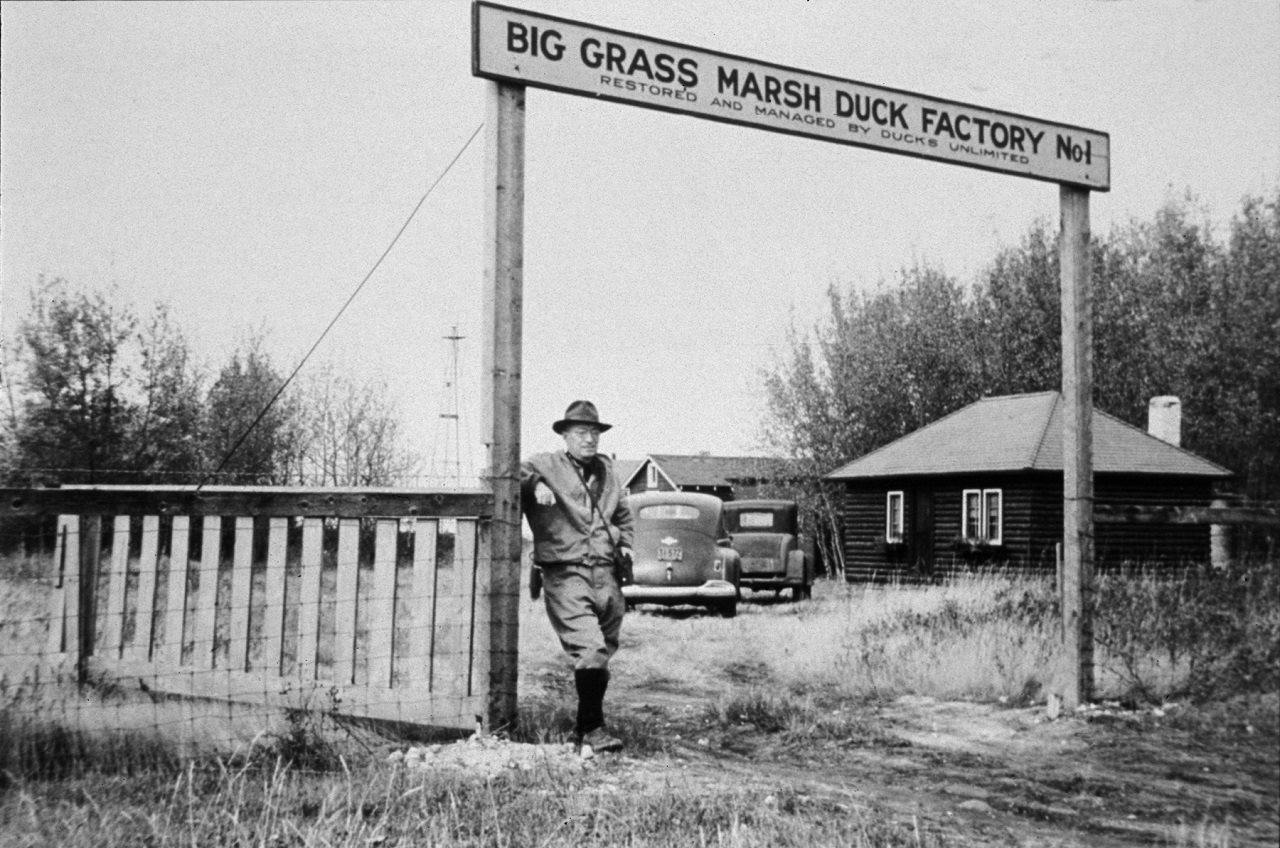Hunters: the original Marsh Keepers
How waterfowlers shaped DUC's mission 79 years ago, and what it means for conservation today.

“Ducks Unlimited (Canada) propose to restore the dried-out water areas so that ducks will again breed in them. They propose to conserve the spring run-off, to dam rivers and hold the water for release at the most beneficial times, to plant duck foods and to co-operate with the provincial governments…. They want more ducks so that the grand sport of wildfowling may continue in the United States for themselves and their posterity. They are coming into Canada to make their plans effective, because 80 per cent of the ducks of the continent are reared in Canada.”
– B.W. (Bert) Cartwright, Nor’West Farmer, 1937.
In his newspaper article, “Ducks Unlimited — Can It Be Done?”, Bert Cartwright writes a candid introduction to the new Ducks Unlimited Canada (DUC) program. DUC had just received its charter of incorporation, and Cartwright would became DUC’s chief naturalist in 1938.
DUC’s roots were planted in the dry, dusty days of the Great Depression. Cartwright vividly describes this time in the U.S. where he saw “dust-choked perdition…dried out, lifeless expanses of sun-smitten prairie.” In Canada, wetlands were steadily disappearing and waterfowl populations were in dramatic decline.

©DUC
North American hunters recognized early on that conserving wetlands helps ensure the future of migratory waterfowl populations. These conservation-minded individuals recognized the need for sustainable use of the environment, and they started Ducks Unlimited Canada, an organization with a mission dedicated to conserving and restoring Canada’s wetland habitats.
Hunting has, and continues to be, an important part of DUC’s heritage. Today, DUC supports waterfowl hunting, when conducted in an ethical and sustainable manner, as a legitimate and acceptable use of a renewable resource.

©DUC
Thanks to the early and ongoing efforts and financial contributions of hunters—the original Marsh Keepers—we have accomplished much. DUC’s wetland conservation efforts continue to be strongly supported by hunters and Canadians from all walks of life who enjoy and respect Canada’s great outdoors. They’re drawn together by mutual concern over the ongoing loss of wetlands in Canada and the effects of this ongoing loss on waterfowl, wildlife, our water and the overall health of our environment.
Even though he was writing at a time of great hardship, Bert Cartwright knew then, as we do now, that habitat conservation would continue to return benefits for years to come. To his question “Ducks Unlimited — Can It Be Done?”, the answer is a resounding “yes.”



